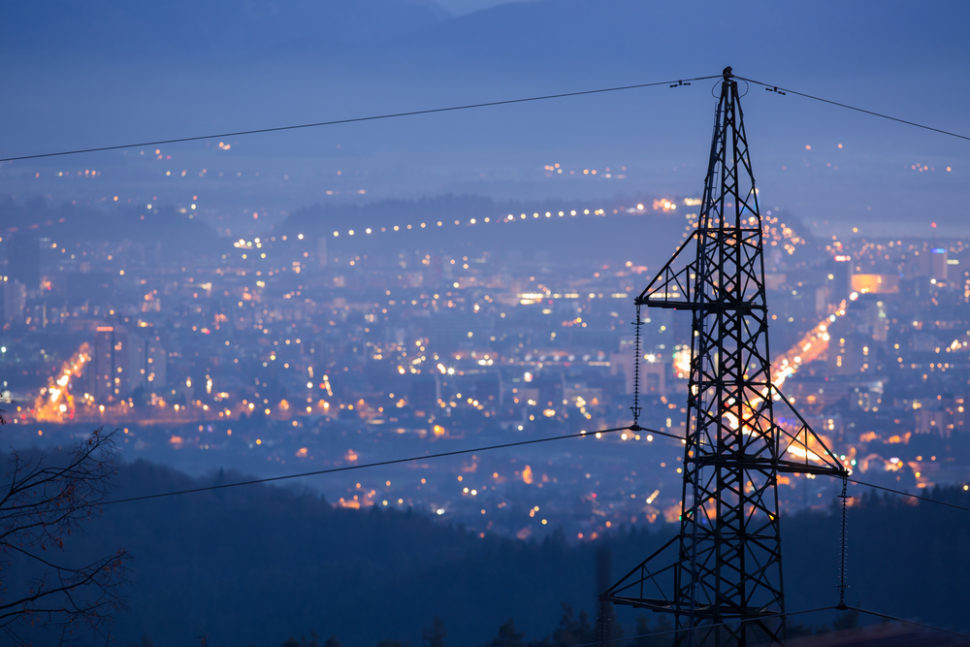We often take electricity for granted, until we get a power outage. In our modern society, there’s a huge support system needed to ensure our 24/7 access to power.
The US electrical grid is a gigantic machine and one of the last century’s largest technical infrastructures.
Historically speaking, this one monster grid wasn’t the result of pre-planning.
In 1882, the Edison Company launched Pearl Street Station in Manhattan, the first commercial power grid in the U.S. and the world.
The grid started with 400 lamps and 82 customers. By the early 20th century, it delivered electricity to over 4,000 individual power utilities.
Scattered around the country, these locations were extremely isolated from each other. It wasn’t until after WWII, with the boom of electricity demand, that utilities began interconnecting their transmission systems.
Today, the US power grid consists of three large interconnected systems: The Eastern, Western, and the Electric Reliability Council of Texas (ERCOT).
Made up 450,000 miles of high voltage power lines and millions of miles of lower-voltage lines, this power network is one of the most complex infrastructures in the world.
Distribution lines transmit power generated by thousands of plants to more than 145 million customers.
But times are changing, and the US electricity grid is in an urgent need of a deep overhaul.
Read More: Why Texas Will be the Center of the American Renewable Revolution
The Aging US Power Grid
The US power grid has almost always lived up to its reliability standards.
However, since the mid-1990s, there’s been a steady decrease in the US electrical reliability.
On average, the U.S. customer loses electricity for 214 minutes per year to outages.
That doesn’t sound like much. But, when compared to other nations — like 70 minutes in the UK, 53 in France, or 6 in Japan — it shows how much the U.S power grid needs revamping.
Power outages come more regularly because of several factors. The main issues are failing electrical infrastructure and aging equipment, coupled with climate instability.
Maintaining the efficiency of the electrical grid is a complex and demanding task, mainly because electricity must be consumed at the moment it is produced.
For the traditional grid, it is not economically or technically viable to store electricity to meet peaks in demand.
The grid can’t keep up with the steady growth in renewable energies. It also can’t handle their output into its incompatible system.
Homes in sunny Hawaii equipped with solar panels generate more power than they need, but the surplus just goes to waste because the grid isn’t equipped to integrate it.
Some utilities even pay wind farms to shut their turbines on some days because of the same reasons.
Read More: Wind Power to Become the Next Cash Crop for Colorado Farmers
Making the Grid Smarter
It’s been over ten years since the US NIST launched its action toward implementing the “protocols and model standards” of the US Smart Grid.
The first critical task for the Smart Grid is to be able to anticipate the development of renewable energies.
The Smart Grid is digitized enough for system operators to have information that enables them to intervene in real-time to prevent incidents before they occur.
For example, faced with an unexpected surge in demand that might overload the network, the system automatically runs simulations to implement corrective actions.
AI will be at the heart of the grid’s paradigm shift.
As the US grid is going smarter and smarter, AI will make it autonomous at handling both data and power. Within the U.S Smart Grid, data flows as continuously and as profusely as electricity.
Machine learning systems provide valuable tools to leverage power-related Big Data to identify system anomalies, forecast loads, predict power outages, and enhance the grid’s overall resilience.
The Pacific Northwest is leading the U.S smart grid by providing a testing ground for smart grid technologies, strategies, and policies.
The Pacific Northwest Smart Grid Demonstration Project is the largest of the U.S. Department of Energy’s smart grid demonstration projects.
Aside from the 16 demo projects, the DOE’s U.S Smart Grid Demonstration Program (SGDP) also consists of 16 Energy Storage Demonstrations projects, with a total budget of $1.6 billion.
Set in motion by the Energy Independence and Security Act, the U.S Smart Grid Demonstration Program seems to be taking a long time to demonstrate its viability.
Smart Solutions to Big Problems
It is important to note that, obviously, the U.S is a large country. The large areas of land along with the isolated nature of many urban areas makes it considerably difficult to maintain and improve the structure of the U.S power grid.
However, with renewable energy sources becoming cheaper and more efficient, it may be a solution to begin isolating these power grids into smaller pockets of infrastructure. Instead of three large masses of outdated, exposed, and inefficient infrastructure, it may be more viable to create a large number of smaller, more efficient, and independent power grids catered to individual state or regional needs.
Regardless of the solution, it’s clear that the US power grid is in dire need of restructuring, and repairing old technology will just not cut it for the power-hungry future.


















Comments (0)
Most Recent